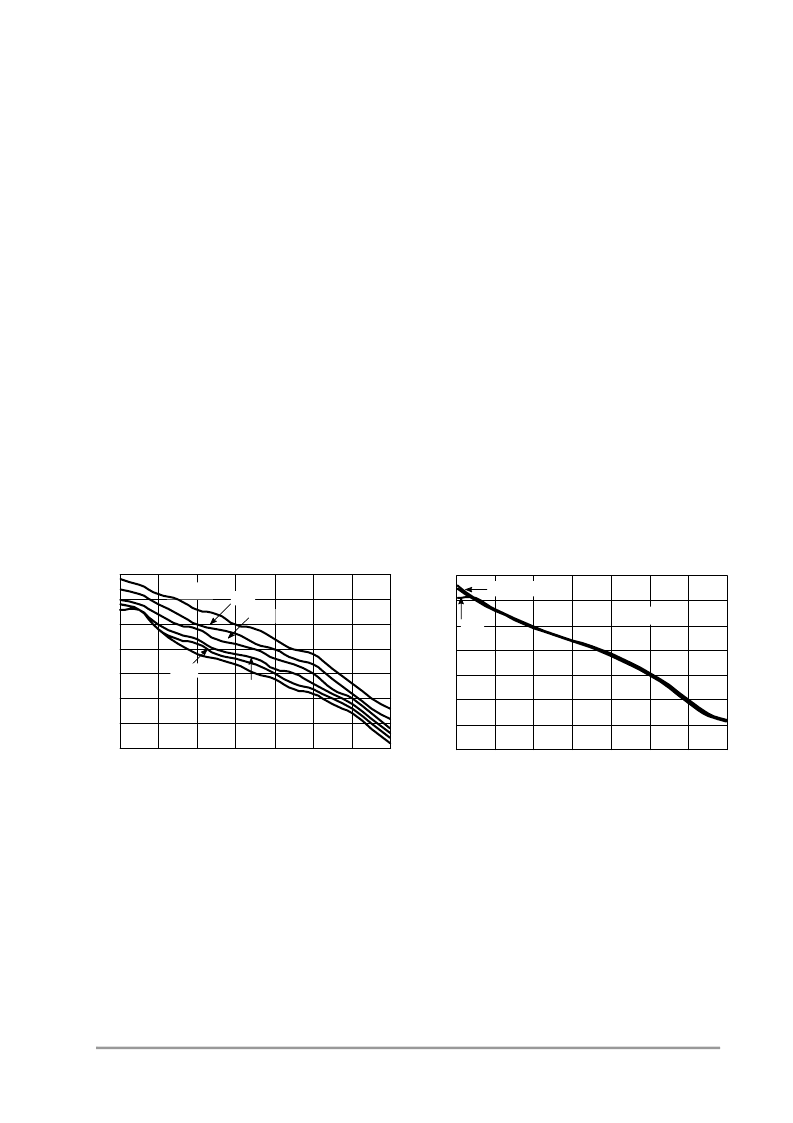- 您現(xiàn)在的位置:買賣IC網(wǎng) > PDF目錄371009 > MC13180 (MOTOROLA INC) 2.4 GHz Low Power Wireless Transceiver IC for Bluetooth⑩ Applications PDF資料下載
參數(shù)資料
| 型號: | MC13180 |
| 廠商: | MOTOROLA INC |
| 元件分類: | 通信及網(wǎng)絡 |
| 英文描述: | 2.4 GHz Low Power Wireless Transceiver IC for Bluetooth⑩ Applications |
| 中文描述: | SPECIALTY TELECOM CIRCUIT, PQCC48 |
| 封裝: | PLASTIC, QFN-48 |
| 文件頁數(shù): | 42/58頁 |
| 文件大小: | 992K |
| 代理商: | MC13180 |
第1頁第2頁第3頁第4頁第5頁第6頁第7頁第8頁第9頁第10頁第11頁第12頁第13頁第14頁第15頁第16頁第17頁第18頁第19頁第20頁第21頁第22頁第23頁第24頁第25頁第26頁第27頁第28頁第29頁第30頁第31頁第32頁第33頁第34頁第35頁第36頁第37頁第38頁第39頁第40頁第41頁當前第42頁第43頁第44頁第45頁第46頁第47頁第48頁第49頁第50頁第51頁第52頁第53頁第54頁第55頁第56頁第57頁第58頁

42
MC13180 Product Preview
MOTOROLA
Functional Description
4.31 Bandpass Filter (BPF)
The 6.0 MHz bandpass filter is used to block undesired channels. The filter is self
-
adjusting and is
calibrated during each receive cycle, based on an internally generated 6.0 MHz signal. The gain of the
filter is fixed at 4.0 dB.
The nominal pass band for the filter is 720 kHz. This deliberately low pass band can cause significant
intersymbol interference (ISI) issues for a GFSK modulated signal with a 1Mbit/s data rate. The
advantages are increased sensitivity, adjacent channel interference performance and ease of manufacture.
Due to this low pass band, a digitally implemented decoder scheme is utilized to eliminate ISI. This is
referenced as the JD/MLSE, and is incorporated into all Motorola Bluetooth basebands.
The BPF is enabled approximately 10
μ
s after the assertion of the RTXEN pin while programmed for
Receive mode and automatic tuning is complete after approximately 140
μ
s. It is disabled immediately
after the de
-
assertion of the RTXEN pin or during any Idle or Transmit mode.
4.32 Limiter with Received Signal Strength Indicator (RSSI)
The RSSI (received signal strength indicator) is integrated into the limiter. The RSSI ADC converts the
RSSI current into a 4
-
bit digital signal. When the RSSI enable (R4/6) and RSSI Read Enable (R9/8) are
both set, the 4
-
bit RSSI conversion value can be read from the MC13180 register map (R29/3
-
0) while in
Idle mode. The RSSI is updated approximately 40
μ
s after T
propFS
during a receive cycle (see Figure 12).
Enabling RSSI will result in additional current consumption as noted in the Receiver AC Electrical
Specifications. Figure 26 shows the RSSI conversion value versus the RF level input to the LNA at various
temperatures. Figure 27 shows the RSSI conversion versus the RF level at different power supplies.
4.33 Demodulator
The receiver in the MC13180 downconverts the RF signal and demodulates it. The demodulator takes the
IF signal from the limiter and delivers a baseband signal to an A/D converter (ADC). The 6
-
bit ADC uses
the Redundant Sign Digit (RSD) Cyclic architecture that samples the analog input at 4.0 Msamples/s. The
resulting demodulated data out of the MC13180 is a 24 Mbit/s, 2’s
-
complement serial bit stream. The start
of each 6
-
bit data stream is indicated by a frame sync (FS) signal. A 24 MHz clock output accompanies the
demodulated data.
Figure 26. RF Level versus RSSI at Temperature
Figure 27. RF Level versus RSSI at V
CC
RF
-40°C
0°C
R
T
A
= 85°C
25°C
55°C
-20°C
-40
1.0
RSSI CONVERSION VALUE
3.0
5.0
7.0
9.0
11
13
15
-45
-50
-55
-60
-65
-70
-75
R
3.1 V
2.5 and 2.7 V
T
A
= 25°C
-40
1.0
RSSI CONVERSION VALUE
3.0
5.0
7.0
9.0
11
13
15
-45
-50
-55
-60
-65
-70
-75
相關PDF資料 |
PDF描述 |
|---|---|
| MC13280AY | 80/100 MHz Video Processor |
| MC13281A | 80/100 MHz Video Processor |
| MC13281B | 80/100 MHz Video Processor |
| MC13283 | 130 MHz VIDEO PROCESSOR WITH OSD INTERFACE |
| MC13283P | 130 MHz VIDEO PROCESSOR WITH OSD INTERFACE |
相關代理商/技術參數(shù) |
參數(shù)描述 |
|---|---|
| MC13181 | 制造商:MOTOROLA 制造商全稱:Motorola, Inc 功能描述:Wireless Power Management Integrated Circuit |
| MC13181R2 | 制造商:MOTOROLA 制造商全稱:Motorola, Inc 功能描述:Wireless Power Management Integrated Circuit |
| MC13190 | 制造商:MOTOROLA 制造商全稱:Motorola, Inc 功能描述:2.4 GHz Short-Range, Low-Power Transceiver |
| MC13190D | 制造商:MOTOROLA 制造商全稱:Motorola, Inc 功能描述:2.4 GHz Short-Range, Low-Power Transceiver |
| MC13190FC | 制造商:Freescale Semiconductor 功能描述:RF TRANSCEIVER AM 2.75V 32-PIN QFN EP TRAY - Tape and Reel |
發(fā)布緊急采購,3分鐘左右您將得到回復。